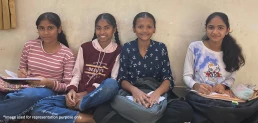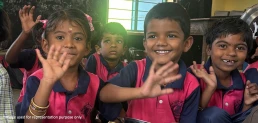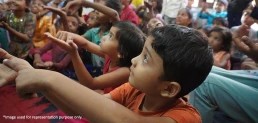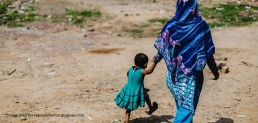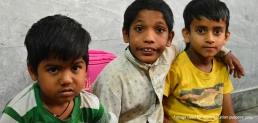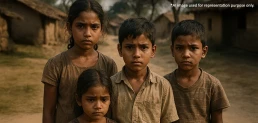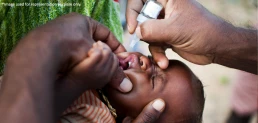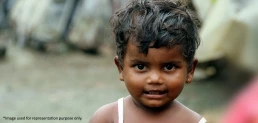Childhood should be a time of learning, play, and dreams. Sadly, for many underprivileged children, it becomes a period of hardship, long working hours, and lost opportunities. Child labor is not just about children being forced to work; it is about children being denied the chance to live a full and healthy childhood. To truly understand how to safeguard them, we must look closely at the effects of child labor, the causes of child labor, and the steps we can take as a society to end it.
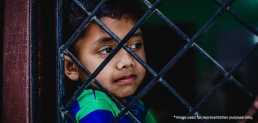

Understanding the Effects of Child Labor on Underprivileged Children
Physical and Psychological Impact of Child Labor
Children who are made to work often face dangerous conditions. Many of them work in fields, factories, construction sites, or as domestic helpers. These environments expose them to injuries, harmful substances, and long hours that their young bodies simply cannot handle. It is common for children to develop chronic health problems, including respiratory issues, back pain, and malnutrition, because their energy is spent on labour rather than growth.
The psychological toll is just as severe. Constant pressure, exhaustion, and in many cases, mistreatment leave deep scars. These children may grow up with anxiety, low self-esteem, and depression. For a child who should be playing and exploring, being burdened with adult responsibilities too early robs them of joy and confidence.
Long-Term Consequences on Education and Future Opportunities
One of the most damaging effects of child labor is the loss of education. A child who spends their days working has little time or energy to attend school. Without education, they grow up with limited skills and fewer chances of finding decent jobs as adults.
This creates a cycle where poverty and child labor feed into each other. Parents send their children to work because of poverty, but by doing so, they reduce the child’s chance of escaping that poverty later in life. The result is generations trapped in the same struggles, unable to break free.
Identifying the Causes of Child Labor in Underprivileged Communities
Economic Factors Driving Child Labor
The most immediate cause of child labor is financial hardship. For families living hand-to-mouth, every extra bit of income matters. Children are seen as contributors to household survival, especially in rural areas where work is seasonal and unstable. The lack of decent-paying jobs for adults only makes the reliance on children stronger.
Social and Cultural Factors Contributing to Child Labor
Cultural beliefs and traditions also play a role. In some communities, it is considered normal for children to work alongside their parents from a young age. Domestic labor, especially for girls, is often hidden and accepted as part of family duty. These social norms make it harder to challenge the practice of child labor.
The Role of Poverty in the Perpetuation of Child Labor
At its core, poverty is the biggest driver. Families with limited resources often see education as a luxury rather than a necessity. If parents never had the chance to go to school themselves, they may not see the long-term value of education for their children. This lack of awareness, combined with immediate financial needs, pushes children into labor.
How to Protect Underprivileged Children from the Adverse Effects of Child Labor
Raising Awareness and Advocacy to Prevent Child Labor
One of the first steps in protection is awareness. Many families do not fully understand the harm caused by child labour or the opportunities lost through missed schooling. By raising awareness at community levels, through schools, NGOs, and government campaigns, families can begin to see education as an investment rather than a burden.
Advocacy is also vital. Laws exist to protect children, but they must be enforced. Communities and civil society groups can work together to demand accountability from local authorities, ensuring that children are not exploited in industries or domestic work.
Importance of Education in Breaking the Cycle of Child Labor
Education is the strongest tool we have against child labor. When a child is given access to schooling, they gain knowledge, skills, and confidence. Education opens doors to better opportunities and breaks the generational cycle of poverty.
For underprivileged children, schools must be accessible and inclusive. This means providing scholarships, mid-day meals, free books, and safe environments where children can thrive. When families see that education leads to real opportunities, they are less likely to send their children into work.
Strengthening Legal Protections for Children Against Exploitation
India has strong laws against child labor, such as the Child Labour (Prohibition and Regulation) Act, which bans the employment of children under 14 in hazardous work. But laws alone are not enough. Enforcement remains a challenge. Strengthening legal protections means not only punishing offenders but also ensuring rehabilitation for children rescued from labor.
This includes providing counselling, access to education, and support for families so that children are not forced back into labor. Governments must also address loopholes in legislation and strengthen monitoring systems to prevent industries from exploiting children.
CRY America’s Role in Safeguarding Underprivileged Children from Child Labor
At CRY America, the fight against child labor is at the heart of our mission. We work to ensure that every child has the chance to enjoy their right to education, safety, and a dignified childhood. Our approach is holistic: we work with families, schools, communities, and governments to address both the causes of child labor and its devastating effects.
This means:
- Supporting schools in rural and underprivileged areas to make education accessible.
- Running awareness campaigns to highlight the dangers of child labor.
- Advocating for stronger enforcement of laws protecting children.
- Helping families access welfare schemes so that they do not depend on their children’s income.
Through these efforts, we aim to break the cycle of poverty and labor, ensuring that children grow up with hope, skills, and opportunities for a brighter future.
FAQs
How does poverty contribute to the rise of child labor?
Poverty is the biggest driver of child labor. Families struggling to survive see children as additional earners. When parents lack stable incomes, they send their children to work, often sacrificing their education. This keeps families stuck in poverty, as uneducated children grow into adults with limited opportunities.
What are the long-term psychological effects of child labor?
Child labour leaves lasting emotional scars. Children often experience anxiety, low self-worth, and trauma from unsafe or exploitative work environments. Missing out on a carefree childhood affects their confidence and social development. As adults, many struggle with mental health issues and feel unprepared for independent life.
How can child labor be prevented in rural and underprivileged areas?
Prevention requires education, awareness, and economic support. Providing schools, scholarships, and meals reduces the pressure on families. Creating job opportunities for adults helps parents support their households without relying on children’s labour. Community awareness campaigns also change mindsets, making education a priority over work.
How can communities and governments work together to reduce child labor?
Communities and governments must join hands to enforce laws, support families, and provide accessible education. Governments can offer financial support and strict monitoring, while communities can report violations and encourage school attendance. Together, they create an environment where children are protected and empowered.
Recommended for you











